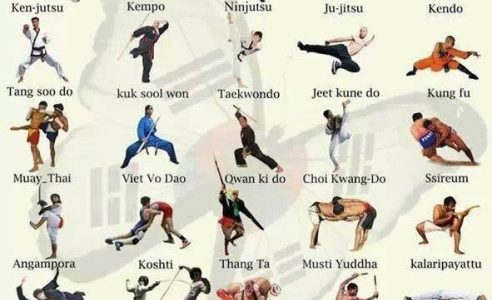Start A Fascinating Adventure Right Into The Realm Of Martial Arts, Where The Blend Of Old-Time Custom-Mades And Contemporary Performance Waits For
Start A Fascinating Adventure Right Into The Realm Of Martial Arts, Where The Blend Of Old-Time Custom-Mades And Contemporary Performance Waits For
Blog Article
Short Article By-Barber Mcintyre
Step into the old world where martial arts were substantiated of necessity in varied areas. Cultures crafted one-of-a-kind battling designs intertwined with historical contexts. Techniques advanced over centuries via committed technique and social exchanges. Today, modern martial arts mix typical elements for maximum efficiency. Philosophically, martial arts highlight discipline, self-improvement, and harmony. simply click the up coming document , humility, and balance are foundational concepts assisting specialists in the direction of development and resilience. Explore the midsts of this abundant history and ideology to discover the profound influences shaping this long-lasting discipline.
Beginnings of Fighting Style
Fighting style came from various areas all over the world, evolving as practical battle systems to defend against dangers. These old battling designs were created out of need, with each culture crafting methods matched to their special atmospheres and obstacles. From the grappling arts of Jujutsu in Japan to the striking techniques of Martial art in China, martial arts were deeply intertwined with the historic, social, and social textile of their respective societies.
In Japan, the samurai course polished martial arts like Kenjutsu, the art of the sword, which later advanced right into the a lot more promoted form of Kendo. Meanwhile, in Brazil, Capoeira emerged as a mix of dance and fight, created by enslaved Africans as a means to stand up to injustice. Each martial art lugs with it an abundant history and philosophy, reflecting the worths and ideas of individuals who practiced them.
As you look into the origins of martial arts, you uncover a tapestry of human resourcefulness, resilience, and the unrelenting spirit of warriors throughout time.
Development of Methods
Through centuries of practice and improvement, combat strategies within various martial arts have actually undergone an extensive advancement. From ancient styles like Kung Fu and Martial arts to more modern-day disciplines such as Brazilian Jiu-Jitsu and Krav Maga, the development of techniques has actually been driven by a combination of social impacts, practical applications, and technological advancements.
One significant aspect of this evolution is the cross-pollination of methods between different martial arts. As an example, techniques from traditional Japanese Jiu-Jitsu were included into the creation of Judo by Jigoro Kano in the late 19th century. This blending of designs has actually resulted in the growth of hybrid martial arts like Mixed Martial Arts (MIXED MARTIAL ARTS), which combine aspects of striking, grappling, and submission strategies.
Furthermore, https://martialartsinstructorkids98764.kylieblog.com/28136049/the-development-of-combat-an-overview-to-martial-arts-weaponry-and-methods of methods has actually been formed by the boosting emphasis on effectiveness and effectiveness in combat. Practitioners have constantly looked for to fine-tune their techniques through rigorous training, trial and error, and competition, leading to the development of extremely specialized and effective fighting designs. Generally, what's the best martial art to use on a kid of techniques in martial arts shows the dynamic nature of battle and the recurring mission for improvement and advancement.
Philosophical Structures
Checking out the underlying thoughtful concepts of martial arts offers understanding into their core values and directing ideas. At the heart of lots of martial arts self-controls is the concept of self-control itself. By training your mind and body to serve as one natural device, you grow self-control that prolongs beyond the dojo or health club right into day-to-day life. This discipline includes regard, humbleness, and self-control, shaping not just your physical capabilities but also your character.
One more basic philosophical foundation in martial arts is the concept of constant self-improvement. The trip of mastering a fighting style is perpetual, with professionals constantly making every effort to better themselves, both physically and emotionally. This focus on development fosters durability, perseverance, and a growth state of mind that can be applied to all aspects of life.
In addition, martial arts stress the relevance of harmony and equilibrium. Methods are made to utilize an opponent's energy versus them, highlighting the principle of generating and rerouting force as opposed to fulfilling it head-on. This viewpoint includes social connections, promoting peaceful resolutions and mutual understanding. By accepting these thoughtful structures, martial musicians not only improve their fight abilities but also grow a way of living centered on personal development, regard, and consistency.
Conclusion
Finally, the history and philosophy of martial arts offer a rich tapestry of tradition, discipline, and self-improvement.
Take for instance the tale of Bruce Lee, who reinvented martial arts by mixing different styles and philosophies to create his very own distinct form of Jeet Kune Do.
Via devotion and development, martial artists remain to push limits and influence others to reach their complete possibility both in fight and in life.
